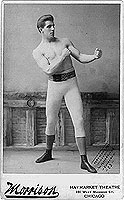Thursday, May 3rd 2012
The YMCA, 900 East 33rd Street, Baltimore, MD
Room #216, Aerobic Studio
Class scheduled for 7:00 to 8:30 PM [may run over to 9:00 PM on student request]
$60 per 8-week session, $30 for YMCA members
6:45
Waiting for Class
Three enthusiastic boys; a white-belt, gold-belt and purple-belt, wait in the hallway for the Zumba class to finish. The walk through impressed me with the facility. It even has an Olympic swimming pool. Sensei Steve permits the boys to hold his bo staves while he answers a basic question about class management, “In a commercial school you get one new student at a time and you detail a high-belt to instruct them in the basics, so the class can progress. With a session program like this I get hit with a dozen white-belts all at once. After two years I finally have a self-sustaining program. We belt-test at the end of a session. When the new session starts I have my assistants, and at the end of the session most of the new students have washed out and the core builds.”
7:00
Room #216
The 30 by 48-foot room has a mirror and unused ballet bar along the entrance wall where a row of observation chairs are lined up. On the left wall is a mirror. On the right wall is a rack of aerobic, fitness and yoga equipment. The wall facing the observation row is a huge panel window overlooking 33rd Street, flanked by two nice pedestal punching bags. The floor is waxed hardwood which is much preferred by traditional karate men like Steve. A grandmother, two mothers, a younger sister, and a father sit along the row of folding chairs. Uniformed YMCA employees occasionally stop by to observe.
7:05
The class has filtered in and consists of 2 teenage girls; 1 male college student; 1 teenage boy, 5 boys and 2 girls. This tally is a total. In reality 3 children showed up late. Steve noted later that this generally has to do with parental scheduling and transportation issues, and that the students like being on time.
7:06
The Line-Up
The class is called to line-up facing the teacher and does so by rank from right to left: 2 purple-belts; 1 orange-belt; 2 gold-belts; 7 white-belts
Sensei Steve asks, “Does anyone have a question?”
He then has the students count off in Japanese.
The students are then told to break into lines by rank, with the white-belts in the rear [so that they are better positioned to learn by example, and the teacher can work on advancing his higher ranks.]
Sensei checks belts to see if they are tied correctly.
7:09
Basic Fitness
Steve sets out 4 chairs at the corners of the room to serve as turning points for a running circuit.
The teacher leads the class in jumping-jacks.
Since only one student called out during jumping-jacks the class is punished with a set of 5 pushups.
At this point it becomes obvious to the observer that instructing a broad-based class of modern American children is quickly reduced to a matter of basic physical fitness. In a society without physical education in primary schools the lack of even basic bio-mechanical aptitude on the part of children is glaringly apparent. Throughout the warm-up phase of the class Sensei Steve is effectively an elementary school gym teacher from the 1970s.
Sensei pauses to correct some poor English and jumping-jacks resume according to a three-count in Japanese. [I would be doing pushups all night long.]
The class is instructed in pushup posture and they struggle through a set as Sensei stalks among them with his teaching aid: a shinai [or kendo stick] which he prefers to use for correcting posture to avoid any appearance that a student might be being inappropriately touched and so that the correction is clearly visible to other students. Steve’s sense of group instruction strikes the observer as strong. This is more like watching a baseball or football coach as opposed to a boxing or wrestling coach.
The students pair off for cross-arm sit-ups, standing on each-other’s feet with arms crossed.
Ten laps are then run around the chairs with the students called on to jump over a gear bag for the final lap. This is very difficult for some of the new students and the class is made to run in place while the slow runners complete the course. As one student struggles to complete the course Steve instructs the class to wait for her in a pushup position and then runs with her, encouraging her verbally, while she finishes.
The high ranks return the chairs as Steve lines up the new students and says, “If you don’t have enough in you to do a few pushups and run a few laps you have some work to do. You have to work. If you don’t want to work don’t walk through this door.”
7:28
Karate Fundamentals
The class begins doing reverse punches form a horse stance. Sensei takes the kick-shield to students one at a time and has them strike it. Strikes with a weak ‘kia’ shout are repeated. Steve addresses his students by name instead of by rank.
A late arrival is set to do jumping-jacks, toe-touches and pushups before joining in.
Steve notes the similarity in horse stance posture and pushup posture and then declares that the class will do more pushups because of their weak ‘kia!’ [It is obvious to the observer that the horse stance is being used to develop a basic bent-knee athletic posture. It was always hard for me to fathom why you would train a fighter this way, but it makes sense at this level, with people that have no strength to speak of and who do not naturally bend their knees.]
The class is reformed into one line and led in a C-step drill, similar to the line-drill in boxing. The white-belts do this drill with their hands on hips while the ranks punch with their steps. In boxing terms the C-step is effectively an in-line heel-toe shift.
Steve stops for a moment to remind the students to be on balance at all times and to defend themselves at all times. He uses a recent prize-fight as a talking point. The students return to the drill. Ranks that drop their guard are made to do an additional 5 push-ups. He stays on the white-belts about their posture and advances the ranks to an inside block to a palm-heel-to-chin counter.
The drill is advanced to terminate in a cat-stance for which he uses the Japanese name.
Steve then leads the class in a two-person set, featuring a step-block-punch sequence.
The students are encouraged to raise hands if they have questions.
Sensei Steve then asks students questions at random. This results in a 5-minute discussion of the perils of ‘stepping too long and getting spread out’ and of ‘stepping too short
and being linear’. He advances to demonstrating the evils of ‘arm-punching’ and illustrates proper reverse punch form in a two-person set with a purple-belt. This finishes with Steve demonstrating a 5-punch combo. A purple-belt expresses doubt that he could do a 5-punch combo. Steve responds, “If you can count to five you can do five strikes.”
He now steps back and uses the stick as a pointer to illustrate the angle of an attacking limb, and goes on to note the importance of hitting the chin and not the head.
Steve then selects a student to demonstrate the danger of opening your center-line to an attack and the advisability of closing against a punching attack.
8:00
The Break
A 5-minute break is called and the teacher suggests that any snacking should be done on fruits not salty snacks. The break was extended when a student expressed some doubt as to his taking a belt-test [There is no charge for this as in commercial schools.] and Steve took the discussion into the hallway with a parent.
8:11
Study Groups
Two junior students are each paired off with a purple-belt and a sheet of requirements to review in preparation for their upcoming test.
The orange-belt and gold-belts are grouped together to practice a striking & blocking combo while Steve takes the white-belts through their fundamentals again. The white-belts do balancing exercises and are lectured on the karate learning process and the purpose of katas.
He does break off to review the progress of the combo drill and insert some applications.
8:22
The Closing Line-up
Sensei Steve calls for two lines and the students form one line. He responds, “When I call for two lines I should get two lines.” They then form back into two lines, with the white-belts to the rear.
Steve then asks if there are any questions. There are no questions so he reviews the expectations for each segment of the class, drawing on the evening’s activities as examples. The white-belts are then made to sit and watch the higher ranks go through their katas on his call.
Two lines are then formed and he leads the class in jumping-jacks and pushups.
The students then gather in a kneeling circle and he extends invitations to the Friday night advanced class, which will focus on the bo staff. He makes a declaration of group love and respect and they respond with a kneeling bow and then jump to their feet for an upbeat finish.
8:31
After Class
Sensei Steve has a talk with a tentative student and is engaged in some playful sparring by some of the boys. A seven-year old girl then asks her parents if they can take Sensei Steve to Disney World [Laughs follow]. As the class breaks up Steve commented to me on the fact that he is essentially running two classes together, and is looking forward to having some more advanced students to help things along.
Impressions
This guy should be teaching physical education at a private school.
What you don’t get to see in my narrative above is the fact that Steve has a very crisp hard karate style, which is very rare these days. He once operated a commercial karate school, but refused to sell rank or buy into the theatrical forms and point-karate culture which he thinks is counter to self-defense. His goal is to teach discipline and self-defense without abandoning the Japanese roots of his art. From my perspective Steve’s acknowledgement that no bag of martial arts tricks is going to save an unhealthy weakling from an attacker, coupled with his stress on fundamentals makes him stand out from the field of fantasists and day-care operators currently running so many children’s ‘self-defense’ programs.
This is the best children’s program I have seen, and I have seen Steve run the same type of program at a Catholic elementary school and at his old OKS studio in Belair-Edison back in the early nineties. That is when I met him, as a long-haired freak coming into his school to buy a pair of red oak and rope octagon rice-flails.
If you are a cross-trainer I would talk to Steve about his Friday night classes, which are informal and malleable. At the price it’s still a deal to get one lesson a week. He’s a fundamentals fanatic, which really makes him a lot like dealing with a boxing coach when it comes to his art.
Sensei Steve’s perspective is best summed up in his own words, “I teach self-defense as a discipline. If that discipline keeps my students from never getting in a fight then I’ve succeeded. I’ve survived [rounds] with pro kick-boxers and being shot [See When You’re Food: Outgunned, SJ]. But what I’m really proud of is never letting myself get sucked into some stupid street-fight.”











